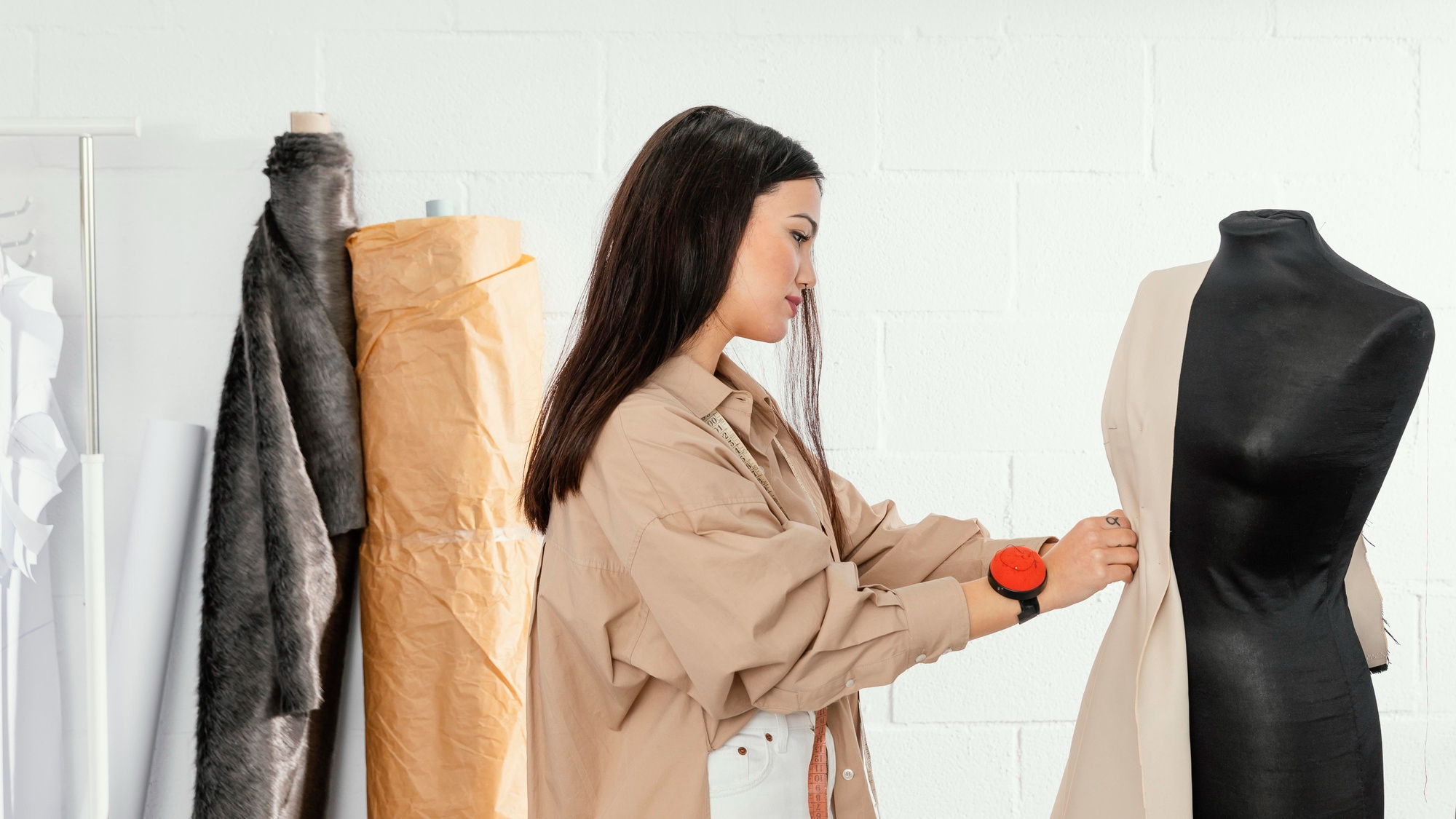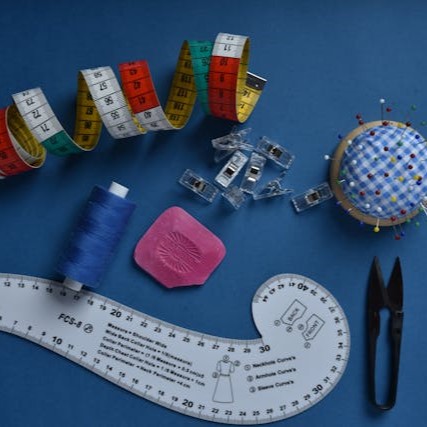Draping is a fundamental technique in Fashion Design

In Fashion design Draping is a fundamental technique in fashion design that involves manipulating fabric directly on a mannequin or dress form to create a garment’s shape and silhouette. It allows designers to experiment with the flow and structure of fabric without relying solely on flat patterns. Here’s a detailed breakdown of draping in fashion design:
1. Importance of Draping in Fashion Design
Draping offers a three-dimensional approach to garment creation, enabling designers to visualize how fabric interacts with the body’s contours. It is widely used in haute couture and avant-garde fashion due to its flexibility in creating organic shapes.
Benefits of Draping:
- Allows for greater precision in shaping garments.
- Helps designers explore unique silhouettes that are difficult to achieve with flat patterns.
- Provides a hands-on approach to understanding fabric behavior.
2. Draping Techniques
Different draping techniques help achieve various aesthetics. Here are the most common methods:
A. Free Draping
- Designers pin and manipulate fabric directly onto a dress form without following a structured pattern.
- Commonly used in avant-garde fashion, where asymmetry and fluidity are key.
Example:
Balenciaga’s sculptural gowns often use free draping to create dramatic silhouettes.
B. Controlled Draping
- Involves systematic folding, pleating, or gathering fabric for a more structured design.
- Used in tailored pieces like evening gowns and bridal wear.
Example:
Christian Dior’s “New Look” collection in 1947 featured structured draping with cinched waists and voluminous skirts.
C. Bias Draping
- Fabric is cut on the bias (diagonal grain) to achieve a fluid, body-hugging fit.
- Creates a natural stretch, allowing garments to drape elegantly.
Example:
Madeleine Vionnet, a pioneer of bias-cut designs, revolutionized draping with her Grecian-inspired gowns.
3. Fabric Choices for Draping
The choice of fabric influences the movement and structure of a draped garment.
Best Fabrics for Draping:
- Silk chiffon – Light and airy, perfect for flowing designs.
- Crepe – Has a soft drape and subtle texture.
- Jersey – Stretchy and clings to the body beautifully.
- Organza – Provides structure while allowing delicate folds.
Example:
Versace often uses silk chiffon in their gowns to create fluid draping effects.
4. Draping Process
A step-by-step approach to draping on a mannequin:
- Prepare the Dress Form
- Mark key points such as bust, waist, and hip lines.
- Secure the fabric on the mannequin with pins.
- Manipulate the Fabric
- Fold, pleat, or gather the fabric to achieve the desired shape.
- Experiment with different placements to create dynamic effects.
- Refine the Design
- Adjust proportions and balance the composition.
- Cut excess fabric and secure seams with temporary stitches.
- Convert Draped Fabric into a Pattern
- Once satisfied with the drape, transfer the fabric design onto paper.
- This pattern will be refined and used for the final garment production.
5. Draping in Modern Fashion
Contemporary designers continue to embrace draping as a key element in fashion.
Famous Designers Known for Draping:
- Issey Miyake – Uses pleating and draping for futuristic designs.
- Yohji Yamamoto – Masters asymmetrical draping in avant-garde fashion.
- Donna Karan – Utilizes jersey fabric draping in her signature wrap dresses.
Draping remains one of the most artistic and expressive techniques in fashion design.

Here are some notable real-world examples in Fashion Design:
1. Grecian-Inspired Draping – Madeleine Vionnet
Madeleine Vionnet revolutionized draping in the early 20th century with her iconic bias-cut designs. Inspired by ancient Greek statues, she created gowns that flowed naturally over the body, offering movement and grace without rigid seams. Her designs remain influential in evening wear and bridal fashion today.
2. Sculptural Draping – Cristóbal Balenciaga
Balenciaga was a master of structured draping. His designs often featured exaggerated shapes achieved through careful fabric manipulation rather than traditional tailoring. The “Sack Dress” (1957) is a famous example where he draped fabric in a way that eliminated the waistline, creating a groundbreaking silhouette.
3. The Sari – Traditional Draping in Indian Fashion
The Indian sari is one of the best examples of draping in everyday fashion. Rather than being sewn into a fixed shape, a sari is draped over the body in various styles, adapting to different occasions and regions. Designers like Sabyasachi and Manish Malhotra modernize this traditional draping method by incorporating structured pleats and embellishments.
4. The Infinity Dress – Halston
Roy Halston designed the famous infinity dress in the 1970s, using soft jersey fabric to create a garment that could be worn in multiple ways. The draped fabric allowed the wearer to manipulate the dress into halter, one-shoulder, or strapless variations, demonstrating the versatility of draping.
5. Red Carpet Gowns – Versace & Marchesa
Luxury fashion houses like Versace and Marchesa frequently use draping to create elegant, flowing gowns worn by celebrities. Draping in these designs ensures a flawless silhouette, enhancing movement while maintaining structure.
6. Avant-Garde Draping – Iris van Herpen
Iris van Herpen incorporates technology with draping techniques to create futuristic, sculptural garments. By combining traditional fabric manipulation with laser-cut designs, she pushes draping beyond conventional textiles.
Draping is a timeless technique that continuously evolves across cultures and fashion movements.


